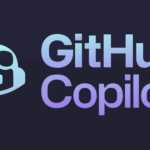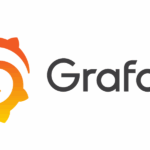
The Contrast Security study found that 90% of applications aren’t tested for vulnerabilities in development and QA. More often, these vulnerabilities are overlooked during the production process. This illustrates why application development frameworks should be secure.
AngularJS, an open-source JavaScript front-end framework, is available for all developers and makes a good choice for web development. It allows developers to decouple HTML templates and provides convenient data-binding options on the client side. This makes development easier. It has some security features, such as automatic output encoding and strict contextual escaping. However, it also has an in-built content safety policy (CSP). These issues need to be addressed.
AngularJS security is a foundation for application security. Therefore, it is vital to prioritize and work on AngularJS security. Surprisingly, only 43% of developers said they use secure coding practices compared to 55% of managers. However, 79% agreed that specific code is becoming more critical. This leaves a lot of room to understand and implement best practices in application security, especially from an AngularJS standpoint.
AngularJS uses inline styles that attackers can bypass easily using custom injected content. Common areas that are particularly vulnerable include Cross-site scripting (XSS), prototype contamination, Denial of Service, DoS, Clickjacking and unsafe object deserialization, Protection bypass, arbitrary script injection, and dangerous command execution.
Attackers can control templates by:
- Generating templates from the server with user-provided content.
- Generating expression using user-provided information in calls to specific methods calls to services that parse expressions or as a predicate for orderBy
- Sandbox, a virtual machine that executes potentially dangerous software code with no impact on local applications, is not helpful here. For example, an AngularJS expression cannot evaluate unsafe expressions. Furthermore, the sandbox prevents access to the Function constructor, window object and DOM elements, global variables and the Object constructor. As a result, an attacker can only execute an existing function, display/modify data from a scope variable or perform a mathematical function. This dramatically reduces the attack’s impact. However, this is not enough as an attacker could break into the sandbox to execute malicious JavaScript within the HTML pages. Therefore, a sandbox is not sufficient for AngularJS Security.
How to Secure AngularJS Applications?
To improve your AngularJS Security position, developers are encouraged to use the following best practices:
Learn the basics
It is crucial to design the application to prevent attackers from changing client-side templates. Good practices include:
- Not mixing server and client templates to avoid XSS vulnerability.
- Not using user input in dynamic template generation.
- Using a tightly integrated CSP.
Avoid customizations
AngularJS’s latest versions and library releases are a great way to gain security-centric features. For security updates and patches, make sure you check the Angular Update log. It is best to avoid customizing libraries to meet specific needs. This presents two challenges: Problems with upgrading to older versions of AngularJS. Necessary security patches are missing.
Leverage default security features from AngularJS
AngularJS’ default options include automatic output encoding and context-aware input sanitization. These are useful in mitigating XSS weaknesses. All unsafe symbols and HTML control letters are encoded. It can be used in conjunction with ng-bind
Limit the usage of DOM APIs
Avoid Angular DOM-related injection or direct use of DOM APIs. Instead, use Angular templates to interact with the DOM. Third-party APIs and libraries may introduce unsafe methods unless you enforce ‘Trusted Types’. Ensure to sanitize untrusted values with DomSanitizer.sanitize. Angular APIs can pose security risks, most notably ElementRef, which gives direct access to DOM. You could also use native options such as data binding or templating.
Leverage Template injection and stick with internal templates
Template Injection is an offline template compiler that can improve performance and provide security features. It is recommended to be used in production deployments. Another option is to use Angular’s Ahead of Time compiler, which can be used offline to compile templates. Developers tend to load templates from multiple sources. Untrusted domains can lead to more vulnerabilities. Make it a habit to run regular scans and fix third-party open-source software packages.
Use templates in one context to avoid unsafe patterns
Patterns like the window.location.href=$location.hash can be an invitation to hackers. Avoid JavaScript code injection and open redirects. Instead, use dictionary maps to provide page references and navigation. Server-side code injection can be reduced by only treating templates in one client or server context. Finally, avoid using Angular’s Angular.element() jQuery compatible API for DOM manipulation. This API can create HTML elements directly on the DOM, further increasing XSS vulnerabilities.
Use security inters
Security linters allow developers to analyse static code and flag errors, bugs, or security vulnerabilities. In AngularJS’ case, we are talking about ‘eslint-plugin-scans-rules‘ and ‘eslint-plugin-angular‘, which help with general coding conventions, rules and guidelines around security.
Take a look at the inbuilt security features
You can use AngularJS’ cross-site request forgery token (CSRF), and cross-site script incorporation (XSSI) features to mitigate HTTP-level vulnerabilities. CSRF is when attackers redirect users to a malicious page and send malicious requests to the server. Developers can use auto-generated authentication tokens to check the origin header sent from the user’s browser. In addition, they can make authentication tokens only visible to their applications. To determine if the token values on both the client and server-side match, CSRF will compare them. However, the server-side developers must implement this functionality on their own.
DomSantizer: How to use it correctly?
The most popular data-stealing attack is XSS attacks, where hackers insert scripts in DOM elements on particular packages. Malware attacks and data theft are the subsequent worst nightmares. Therefore, it is recommended to sanitize untrusted inputs (including inspecting and turning them into safe values) across HTML, CSS and Resource URLs. DomSanitizer can be a great option. These are the three most important functions:
What is the Future of AngularJS Security?
Human intervention to monitor incoming traffic is not an option when so many applications are being developed rapidly. Runtime Application Self-Protection is here to help. RASP intercepts all calls to an application and checks for malwares and threats, unlike general-purpose firewalls and Web Application Firewalls that block all suspicious traffic but only look at the perimeter. Furthermore, it integrates with the application so it can protect the application from known vulnerabilities and protect it against unknown attacks.
It is instantaneous, does not require human intervention, and provides contextualized service. This includes information from the system configuration, APIs, codebase, and codebase. In addition, it is embedded within the application to limit false positives and track any untoward behaviour.
It can protect web and non-web apps and secure a system even if an attacker has penetrated perimeter defences. In addition, application logic, configuration and data flow insights provide greater accuracy in threat detection and prevention.
Angular considers all values untrusted by default to prevent XSS bugs. Angular will remove untrusted values from the DOM when a deal is inserted using a template binding or interpolation. If a value has been sanitized by Angular and is safe to use, notify Angular by marking it as trusted.
Angular templates can render values that are different from the ones you have entered. Therefore, they should be treated as executable codes. Never combine user input with template syntax to create templates. This would allow attackers to inject arbitrary code into your application. These vulnerabilities can be prevented by using the default AOT compiler for production deployments.
Additional protection can be added by using Content security policies and Trusted types. Because they cannot be bypassed with lower-level APIs, these web platform features are the best place to prevent XSS attacks. We encourage developers to use these features to configure the content safety policy in their application and enable trusted type enforcement.
What are the Best Practices to Avoid Security Breaches with AngularJS?
- Stay current with the most recent Angular library versions. These updates may fix security issues discovered in older versions. For security-related updates, check the Angular Changelog.
- Do not modify your copy Angular. Customized versions tend to be slower than the current version and may lack security enhancements and fixes. Instead, make a pull request to share your Angular improvements with the community.
- Do not use Angular APIs that are marked as “Security risk.” To learn more, please refer to the Trusting, safe value section.
Auditing Angular Apps
Angular applications should follow the same security principles as regular web applications and be audited accordingly. Security sensitive APIs in Angular that needs to be reviewed in security reviews, such as the bypassSecurityTrust methods, should be marked in the documentation.
We have covered more tips and hacks in this section.
Discover more from TechBooky
Subscribe to get the latest posts sent to your email.







